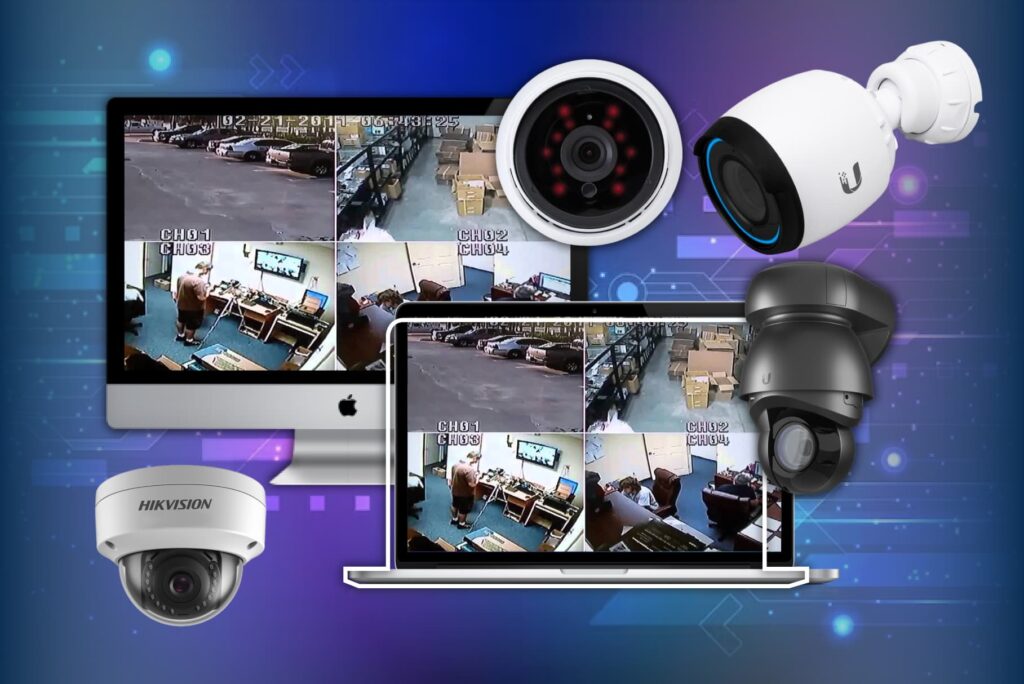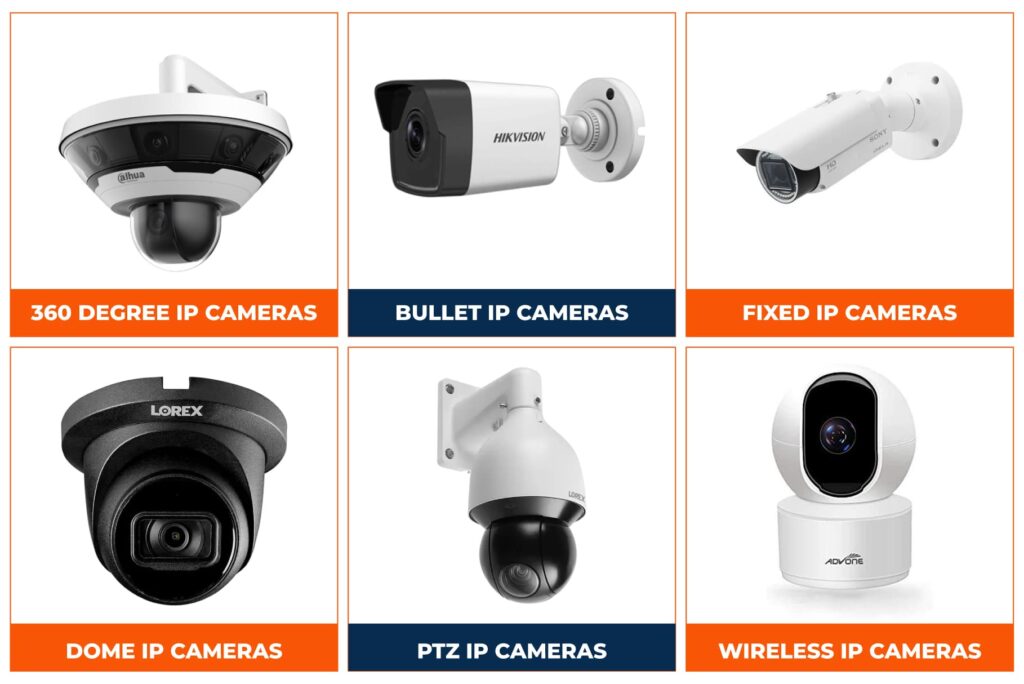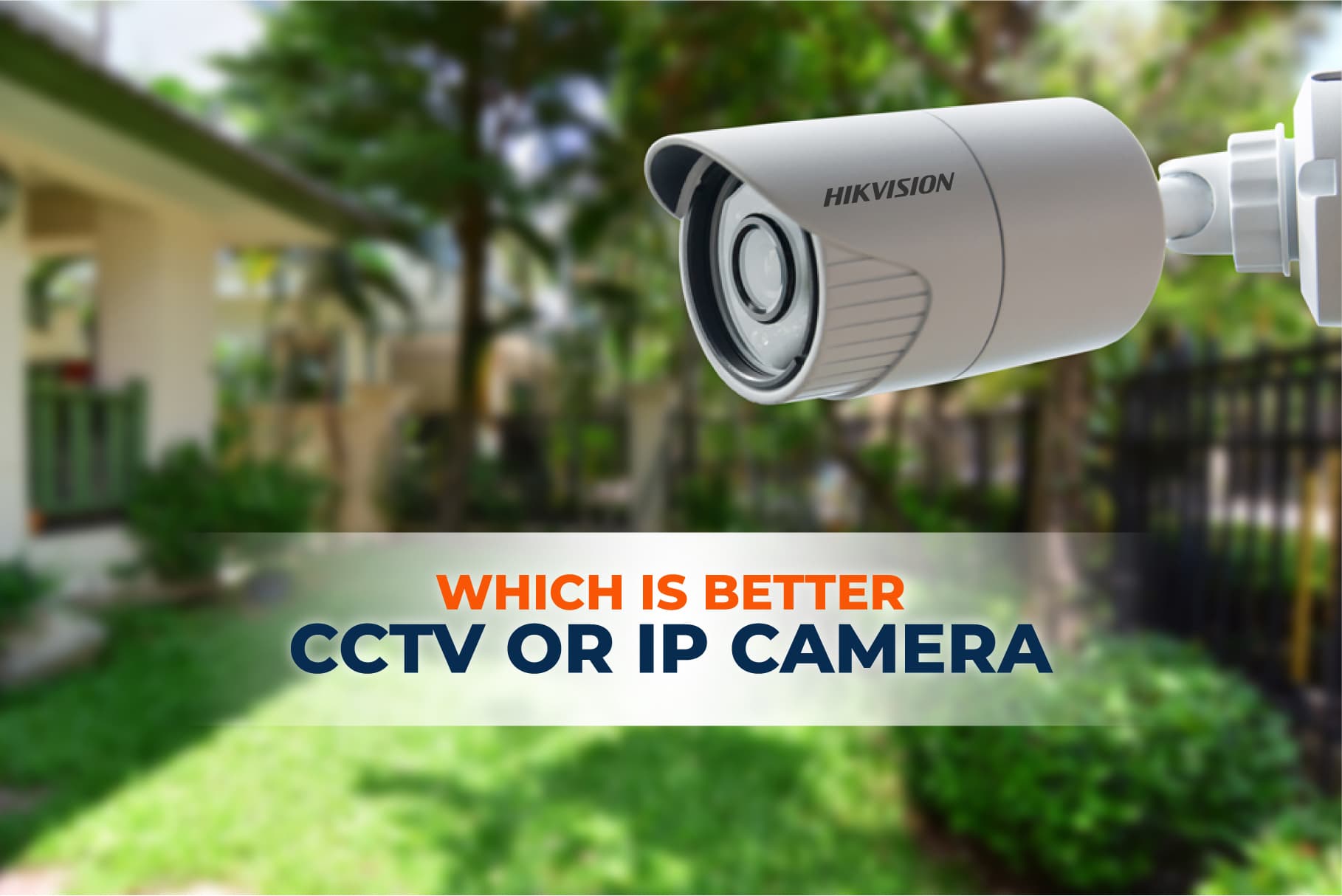M. Waleed Sheikh2025-02-10T13:54:14+00:00
Table of Contents
ToggleWhat is an IP Camera?
An IP camera, also known as a network camera, is a digital video camera used for surveillance and security purposes. Unlike analog cameras that transmit video signals over coaxial cables, IP cameras use the internet protocol (IP) to send digital video and audio data over computer networks or the Internet.
Some key features of IP cameras include high-resolution video capture, motion detection, infrared night vision, pan-tilt-zoom (PTZ) control, and remote viewing via smartphones or tablets. Additionally, many IP cameras can be integrated with other security systems, such as alarms and access control systems, to provide a comprehensive security solution.
What Does an IP Camera Do?
An IP camera is a digital video camera designed to capture and transmit high-quality video and audio over a computer network or the Internet. Here are some of the critical functions of an IP camera:
- Video Surveillance: An IP Security Camera is commonly used for video and security purposes. It can capture high-resolution video footage of a specific area or location and transmit it over the network or the Internet. This footage can be viewed in real-time or recorded for later review.
- Motion Detection: Many IP cameras have motion sensors that detect movement in the camera’s field of view. The camera can automatically alert the user when motion is detected or begin recording video.
- Remote Viewing: IP cameras can be accessed and controlled remotely from a computer or mobile device, allowing users to view live or recorded video anywhere with an internet connection.
- Night Vision: Some IP cameras have infrared sensors that capture clear video footage in low-light or no-light conditions.
- Two-Way Audio: Many IP security cameras have built-in microphones and speakers, allowing two-way audio communication between the camera and the user.
- PTZ Control: Some IP cameras have pan-tilt-zoom (PTZ) controls that allow the user to remotely control the camera’s movement and zoom in or out on specific areas of interest.
How Do IP Cameras Work?

- IP cameras capture video footage using image sensors, such as CMOS or CCD.
- The camera’s video and audio data is encoded into a digital format, such as H.264 or MJPEG. This encoding process compresses the data, making transmitting over a network or the Internet easier.
- IP cameras are connected to a computer network or the Internet using an Ethernet cable or a wireless connection, such as WiFi. Once connected, it sends its digital data to other devices on the network or over the Internet.
- Users can view live or recorded video, adjust camera settings, and receive phone alerts via camera apps.
- IP cameras have local storage; however, a few use advanced methods, i.e. cloud storage, to save data on a server.
IP Cameras are Commonly Used in
IP cameras are used in
- Homes
- Hospitals
- Retail Stores
- Public Spaces
- Industrial Facilities
- Business Setups
What are the Most Important IP Camera Features to Consider?
Like any home security system, IP security Cameras range from starter models to more professional setups with extensive features. Some of the more important elements to consider are camera resolution for HD or Full HD video, night vision for monitoring your home in the evening, and multiple camera viewing angles that let you see more of your property than a stationary camera. Other features that improve your security are recording footage to a computer hard drive, 2-way audio, and weather resistance.
Types of IP Cameras

i) Fixed Cameras
Fixed cameras are the most basic type of IP camera, with a fixed lens and field of view. They are generally the most affordable and easiest to install, but they may only be suitable for some applications.
ii) Dome Cameras
Dome cameras are a type of fixed camera that is housed in a dome-shaped enclosure. They can be mounted on walls or ceilings, and their section protects against vandalism and tampering.
iii) PTZ Cameras
PTZ (pan-tilt-zoom) cameras have motors that allow them to move and adjust their angle remotely. This allows for more flexibility in monitoring and tracking moving objects.
iv) Bullet Cameras
Bullet cameras are similar to fixed cameras, but they are designed to be mounted on walls or ceilings and have a cylindrical shape. They are often used for outdoor applications, as they are weather-resistant and provide a more extended view range.
v) Cube Cameras
Cube Cameras are small, cube-shaped cameras designed for indoor use. They are often used for discrete monitoring and can be easily concealed.
vi) 360-Degree Cameras
360-degree cameras can capture a complete view of a room or area. They are often used in large spaces or for monitoring crowds.
vii) Wireless Cameras
Wireless cameras use WiFi or other wireless protocols to transmit video footage to a network or the Internet. They are often more flexible in terms of installation and can be placed in locations that are difficult to wire.
If you are looking for the best IP Camera Canada, just dial us to our tech expert and get a free quote.
Benefits of IP Cameras
- IP cameras typically offer higher resolution than analog cameras, providing more precise and detailed images.
- Users can access IP cameras remotely from anywhere with an internet connection for real-time monitoring and remote management.
- IP cameras can provide advanced analytics such as facial recognition, object detection, and people counting, which are very beneficial for security and monitoring purposes when the security of sensitive places is involved.
- IP cameras can store video footage remotely in the cloud or on a server, providing additional redundancy and safety.
How to Install IP Cameras?
Determine the locations where cameras are needed, the types of cameras required, and the network infrastructure necessary to support the cameras. Install the cameras in the desired areas, ensuring they are properly secured and positioned for optimal coverage. Connect the cameras to the network and configure them according to the manufacturer’s instructions, including setting the IP address, adjusting the video settings, and enabling desired features such as motion detection. Once the cameras are installed and configured, monitor them regularly to ensure they function correctly and perform routine maintenance such as cleaning the lenses and updating the firmware.
How to Power Your IP Cameras?
A PoE injector or capable network switch is needed to transmit power via an Ethernet cable. If a camera does not have a POE injector, a PoE splitter/dongle is connected. Power sources other than Power over Ethernet(PoE) are Power adapters and Power supply units (PSUs).
What to Consider When Buying an IP Camera?
Resolution, connectivity, PoE, additional features, and cost are important factors when looking for an IP camera. By carefully considering these factors, you can choose the best IP Camera Canada that meets your needs and provides reliable and effective video surveillance.
FAQs
The difference between an IP camera and a digital camera lies in its intended purpose and functionality.
An IP or network camera is designed primarily for surveillance and security purposes. It connects to a network, typically through Ethernet or WiFi, and captures video footage that can be accessed and managed remotely over the network.
Digital cameras are primarily designed for capturing high-quality photos and videos for personal or professional use. They store the media on various types of memory cards and may offer different shooting modes, manual controls, and advanced features specific to the camera model.
CCTV cameras, also known as analog cameras, send video footage via a closed-circuit television system, which means the video is transmitted via coaxial cables to a digital video recorder (DVR). The DVR then converts the analog signal to a digital signal, which can be viewed on a monitor or remotely accessed via the Internet. Surveillance Cameras are cost-effective and do not need the Internet to function.
On the other hand, IP cameras transmit video footage over an internet protocol (IP) network, such as a local area network (LAN) or the Internet. IP cameras connect directly to the network and send digital video footage over the network, which can be accessed and viewed remotely using a computer, smartphone, or other internet-connected device.
IP cameras include a variety of sensors, including image sensors, motion detection sensors, audio sensors, temperature sensors, humidity sensors, and tamper detection sensors.
The specific sensors included on an IP camera will vary depending on the model and features of the camera, and it’s important to carefully review the specifications of any camera you are considering to ensure it includes the sensors and components you need. The best IP camera will have all the properties mentioned above.
IP Security Camera System need more than just drilling and plugging the camera. They need to be correctly installed and configured to a network. We recommend that if it’s your first time, you must hire a professional.
- Connect the camera to a power source using a power adapter or Power over Ethernet (PoE) if the camera supports it.
- Ensure the camera is receiving power and has a stable connection.
- Set up the camera with a setup wizard or mobile app that guides you through the initial setup process. Follow the manufacturer’s instructions to connect the camera to your WiFi network. This typically involves scanning QR codes, pressing buttons on the camera, or using the camera’s web interface.
- Install the manufacturer’s mobile app or software on your smartphone, tablet, or computer. This software enables you to access and control the camera remotely.
- Connect the camera to the app or software and launch the app or software. This process usually involves adding the camera by scanning a QR code, entering a unique camera ID, or selecting the camera from a list of available devices.
- Configure camera settings by accessing the camera’s settings through the app or software to customize its behavior. Manage the video quality you need and check on the additional features you are looking for, i.e., motion detection, recording schedules, and notifications. Adjust these settings based on your preferences and intended use.
- View and manage camera footage once the camera is connected and configured.
Remember to secure your IP WIFI camera by setting strong passwords, keeping the camera software up to date, and limiting access to authorized users. Always consult the manufacturer’s documentation for specific instructions and recommended practices for your particular IP WiFi camera model.

